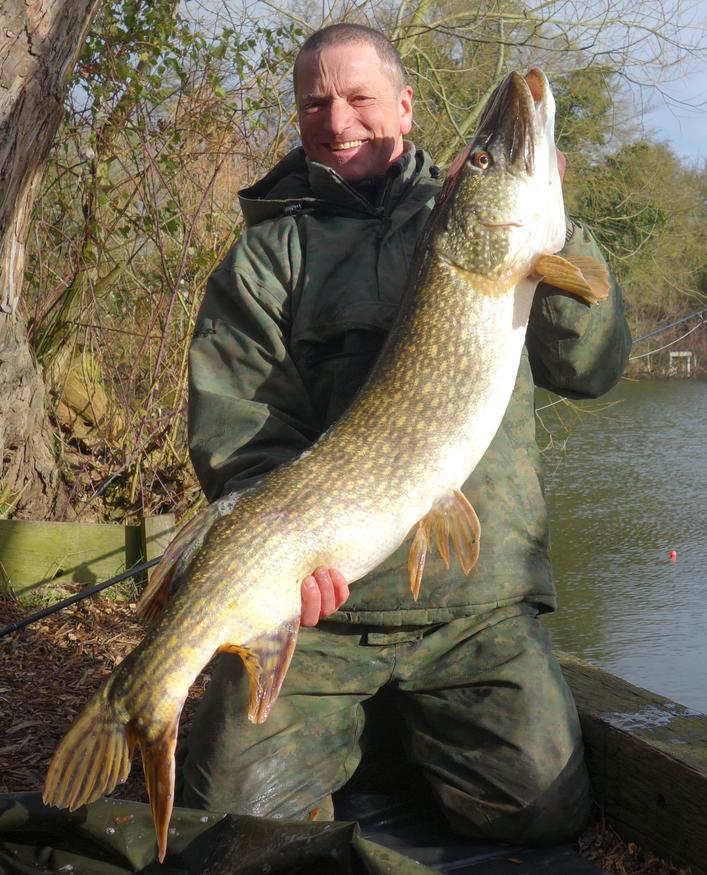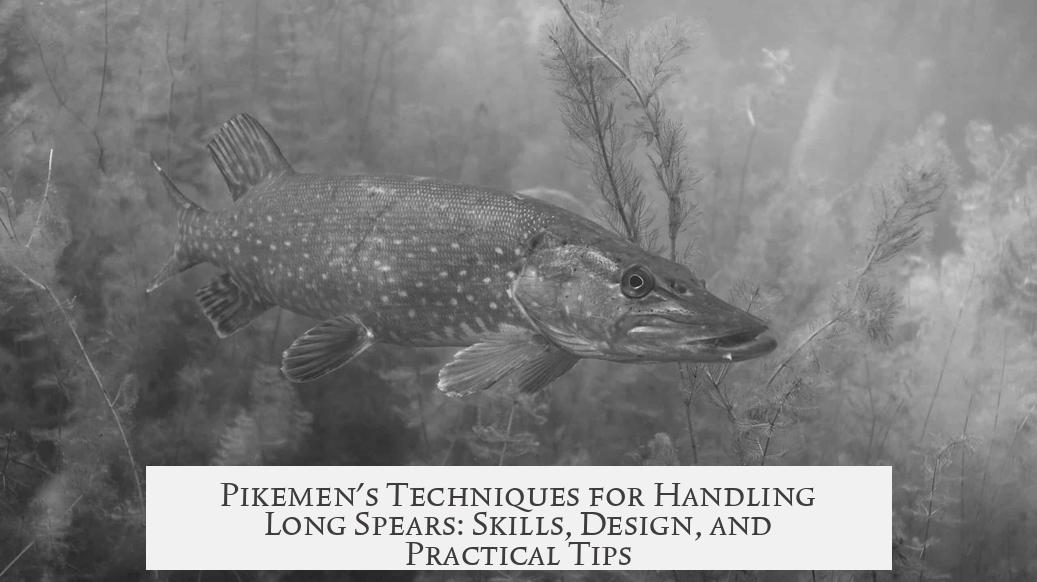Pikemen managed to carry and wield extremely long spears, often 15 to 20 feet long or even more, by employing specific body mechanics and techniques rooted in full-body movement and practice. The key to handling such unwieldy weapons was using the entire body—especially the hips—to control and swing the pike effectively. This approach allowed them to overcome the challenges posed by the weapon’s length and weight.

Pikes came in many variations in length, material, and design. Most were made of hardwood like ash, measuring between 12 and 20 feet. Metal heads, usually several inches long, were attached strongly but remained replaceable since pikes frequently broke in combat. Some armies had to make do with less ideal woods due to shortages. The huge size of the weapon required deliberate handling, making it impractical to rely on arm strength alone.
To manage the pike’s length and weight, pikemen learned thrusting and swinging motions that engaged the hips and full body, rather than their wrists or arms only. This technique was similar to those used in period fencing. They sometimes slid their hands together during a thrust, allowing the pike shaft to flex naturally while maintaining control and adding power. This method compensated for the pike’s natural bend and maximized force delivery.

Two main methods guided the thrusting technique. One involved simply stepping forward and pushing the point steadily into an opponent. The other employed sliding the rear hand forward to meet the lead hand on the shaft, resembling the motion of a pool cue, which maximized power and control by timing with the pike’s flex.
The heavy mass of the pike created substantial force, especially at the weapon’s tip. Though the pike became harder to control at full extension, the combination of length and mass allowed warriors to strike with tremendous momentum. This force, combined with disciplined training, made pikes effective in pushing back cavalry, infantry, or breaking enemy lines.

Practical considerations affected the use and carrying of pikes. Pikemen typically carried their own weapons on marches. Sometimes camp followers or wagons helped transport spare or excess equipment, but soldiers needed to be ready to use their pike at any moment. Since armies marched with all necessary supplies, carrying a long weapon alongside gear was standard.
Despite their size, pikes could be used with one hand in an emergency. An example from 1512 at Ravenna involved Fabian von Schlabrendorf using his pike’s butt end like a flail with one hand. Though dangerous, such techniques show that pikes were versatile weapons in close quarters.

Frequent practice played a vital role in effective pike wielding. Novices could begin to control a pike in minutes once taught to engage their hips for swings. Continued drills ensured soldiers could coordinate thrusts, parries, and advances with their long spears despite the awkward handling that raw strength alone could not overcome.
| Aspect | Details |
|---|---|
| Typical Pike Length | 12 to 20 feet (3.5 to 6 meters) |
| Material | Hardwood such as ash; occasionally local woods when supply was low |
| Handling Technique | Full body movement—primarily hip-driven swings and thrusts |
| Thrusting Method | Stepping forward or sliding rear hand forward to meet lead hand |
| Carrying Method | By pikemen on foot or sometimes transported by followers/wagons |
| Pike Durability | Frequently broke; armies carried replacement staves and heads |
In sum, pikemen managed their long spears through disciplined use of biomechanics and training. They adapted to the weapon’s size by using the hips as the power source for movement and learned to trust the natural flex of the shaft during thrusting motions. Combined with the material qualities and carrying adaptations, these techniques allowed soldiers to wield and transport enormous spears efficiently.

- Pike handling relied on hip-driven, full body movement for control.
- Thrusts integrated sliding hand technique to use pike flex and maximize power.
- Most pikes measured 15–20 feet, usually made of hardwood with steel heads.
- Pikemen carried their pikes personally, though some support helped transport spares.
- Practice allowed even beginners to rapidly develop control over the lengthy weapon.
- Examples exist of using the pike one-handed in combat, demonstrating versatility.
How Did Pikemen Manage to Carry Around and Deal with Extremely Long Spears?
Pikemen handled their incredibly long spears—often 15 to 18 feet or even longer—with surprising skill and technique. These enormous weapons weren’t just awkward sticks toting in battle; they were carefully managed tools that required practice, body mechanics, and special handling tricks to wield effectively.

Let’s dive into the fascinating world of pikemen and their massive pikes. How exactly did they carry, control, and fight with these lengthy spears that seem like they’d be a nightmare to handle?
The Art of Pike Handling: More Than Just Arm Power
You might think swinging an 18-foot stick is all about brute strength, but pikemen actually use their whole body to control these giant weapons. Historical fencing manuals from the pike era explain the method, which closely resembles sword fighting techniques.
Instead of flailing the spear with just wrists or shoulders, pikemen root their movements in their hips. This isn’t just a fancy dance move—it’s a physics hack. By swinging from the hips, they generate power and gain control simultaneously. This makes even an 18-foot pike surprisingly manageable.
Imagine controlling a long pole by your wrists alone, and you’ll understand the struggle. Rooting movement in the hips distributes weight and force in a way the arms alone can’t.
Mastering the Thrust: Flexibility Is Key
Thrusting a pike isn’t just about pushing it straight forward. Pikemen use a two-stage technique:
- Hold the pike solidly and step forward to propel the spear’s point into the enemy.
- Slide the back hand forward to meet the front hand, letting the spear flex naturally as the thrust follows the pike’s rhythm—like using a pool cue.
This second technique acknowledges the pike’s natural limp and flexibility, leveraging it to maintain control and power. It’s a bit like syncing with your weapon’s personality rather than fighting against it.
The Power and Reach of the Pike
Though the far end of the pike is harder to control during a thrust, the weapon carries impressive force. The whole mass of the pike adds momentum to each strike, making it a formidable weapon in skilled hands.
Here’s a thought: If the tip of a sword hits hardest at its longest reach, the pike—much longer and heavier—packs an even more punishing wallop when wielded correctly.
Variety in Pike Design: No One-Size-Fits-All
Believe it or not, no two pikes were exactly alike. The length, shape, and quality varied greatly depending on the wood grain, craftsmanship, and battlefield needs.
- Length: Pike lengths usually ranged from 12 feet (~3.5 m) to 20 feet (~6 m) or longer. Some experts, like John Smythe around 1590, recommended an 18-foot length for optimal manageability and power.
- Material: Ash wood was often preferred due to its strength and flexibility. Yet, armies didn’t always have the luxury of choice. For example, Cromwell’s troops in 1655 had to make pikes from local Barbados wood, which ended up shorter and flimsier than ideal.
- Heads and Fittings: Pike heads were typically four-square and steel-tipped, sometimes with “languettes” (small metal blades) added for defensive or offensive use.
When you consider the natural irregularities in wood and smithing, each pike had a distinct “feel” and handling nuance. Knowing your own pike inside out was crucial.
Practical Matters: Carrying and Maintaining the Giant Spears
Long spears require some strategy for transport. Pikemen usually carried their own pikes when on campaign, as armies marched entirely on foot with limited wagons.
Sometimes camp followers or wagons would haul spare weapons, but the primary tool was best kept within reach. After all, the pike could quickly break in battle, and soldiers needed replacement shafts for repairing their weapons.
This raises a big question: How did they avoid exhausting themselves lugging these lengthy poles everywhere? The answer again boils down to technique and conditioning. Practice made carrying and wielding an 18-foot stick feel natural over time.
Practice Makes Perfect: From Novice to Expert Fast
Newcomers often found pikes intimidating. Yet, early lessons show surprising quick progress. Historians recorded groups of students handling pikes for the first time, and within minutes they could wield them one-handed after practice rooted in hip-driven technique.
It wasn’t just brute strength. The secret was rooted movement and understanding the weapon’s tempo. This allowed soldiers to train effectively and use their pikes with both power and finesse, even in challenging battlefield conditions.
One-Handed Pike Usage? Believe It!
You might think such a large spear always needed two hands. Not necessarily.
Fabian von Schlabrendorf, fighting at Ravenna in 1512, famously wielded his pike by the butt end as a flail, swinging it one-handed and breaking through the enemy’s pike wall to carve an opening. Unfortunately, he was mortally wounded, but his feat proved the pike could be more versatile than expected.
It wasn’t a casual stunt. This sort of technique required skill, strength, and familiarity, showing a surprising range of use for the pike in battle.
So What’s the Takeaway?
Pikemen dealt with extremely long spears by mastering body mechanics, using specific thrusting techniques that harmonized with the weapon’s natural flex, and training extensively to make the pike feel almost like an extension of their own bodies.
The design of pikes—while variable—was geared to balance power, reach, and manageability. Carrying these huge weapons was part of the soldier’s everyday routine, supported by maintenance strategies to deal with breakage.
In essence, pikemen turned what looks like an unwieldy giant stick into a finely tuned weapon through physics, practice, and perseverance.
Got a massive wooden stick and want to wield it like a pikeman? Start with your hips!
OK, maybe don’t carry a 15-foot staff to work, but the lesson stands: Power lies in how you move, not just how hard you push. Was it all smooth sailing? Nope. Pikes often broke, and soldiers had to adapt quickly under fire.
But for fans of history and martial arts alike, the pike remains a fascinating example of how technique and training overcome raw physical challenge.
How did pikemen control the heavy and long pikes during combat?
Pikemen used full body movement rooted in the hips rather than just arms. This technique gave them control and power, making the long pikes manageable despite their size and weight.
What materials were used to make pikes, and did this affect handling?
Hardwoods like ash were preferred for strength and flexibility. However, when unavailable, armies used local woods. This variation affected the weight and durability but pikemen adapted through practice.
How did pikemen carry such long weapons during marches?
Usually, pikemen carried their own pikes. Sometimes camp followers helped, or the pikes were loaded onto wagons. Carrying them personally was common to ensure readiness and care.
What made pikes effective despite their extreme length?
The combination of weapon design, proper wielding techniques rooted in body movement, and continuous practice gave pikemen the reach and power necessary for battle.
Could pikemen use pikes one-handed or in unconventional ways?
Yes. There are accounts like Fabian von Schlabrendorf using his pike like a flail one-handed to break enemy weapons. Skilled pikemen could adapt their techniques when needed.




